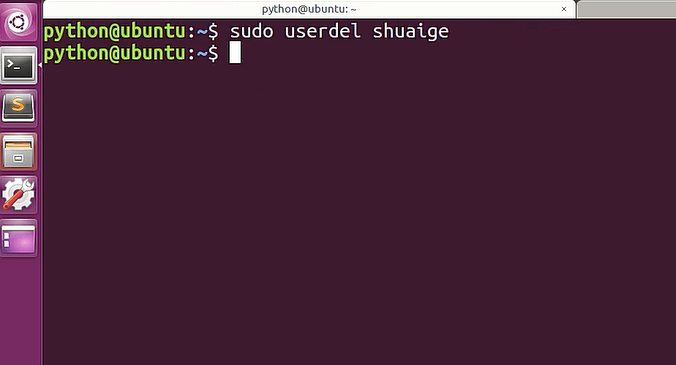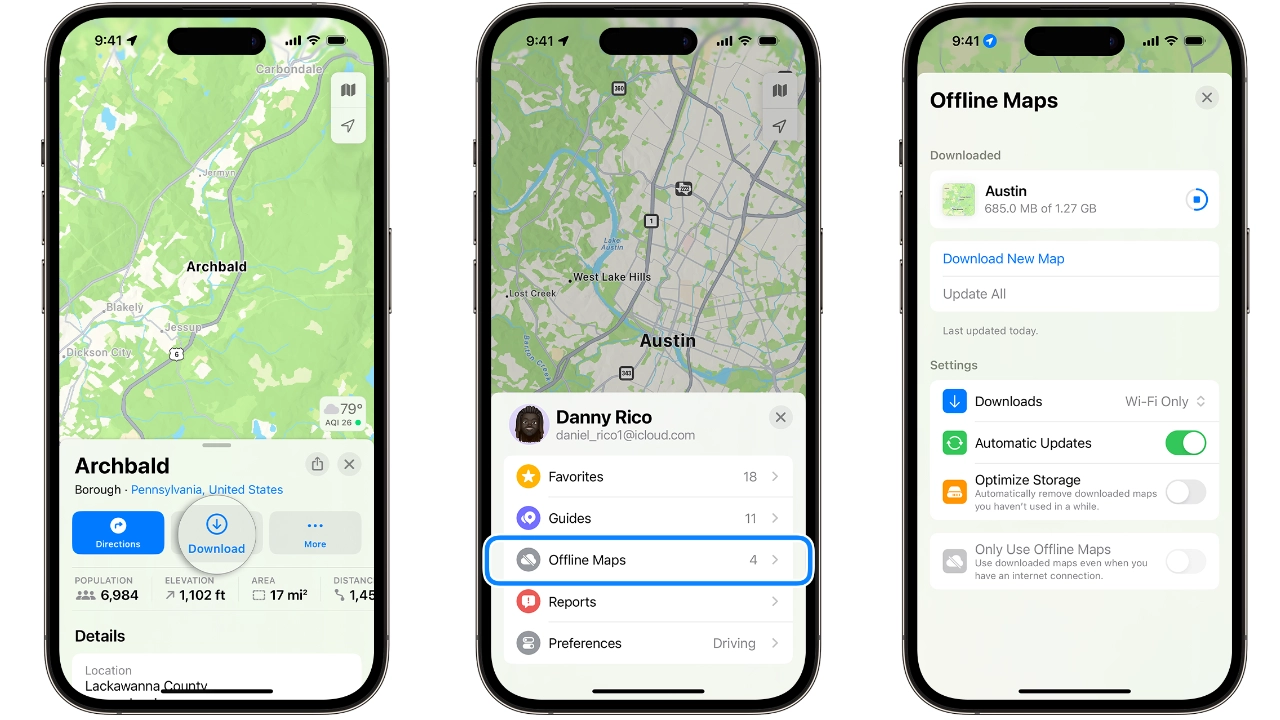在安装完成MySQL后,我们通常添加拥有相应权限的普通用户用来访问数据库。在使用用户本地登录数据库的时候,经常会出现怎么登录也无法登录的情况,但是从其它的mysql客户端却可以登录。
故障现象:
[root@mysrv ~]# mysql -u root -poracle
Welcome to the MySQL monitor. Commands end with ; or \g.
Your MySQL connection id is 10
Server version: 5.6.25-enterprise-commercial-advanced-log MySQL Enterprise Server - Advanced Edition (Commercial)
Copyright (c) 2000, 2012, Oracle and/or its affiliates. All rights reserved.
Oracle is a registered trademark of Oracle Corporation and/or its
affiliates. Other names may be trademarks of their respective
owners.
Type 'help;' or '\h' for help. Type '\c' to clear the current input statement.
mysql> select version()\g
+-------------------------------------------+
| version() |
+-------------------------------------------+
| 5.6.25-enterprise-commercial-advanced-log |
+-------------------------------------------+
1 row in set (0.00 sec)
创建用户并授权:
mysql> grant all on prod.* to 'rose'@'%' identified by 'rose';
Query OK, 0 rows affected (0.01 sec)
mysql> show grants for rose;
+-----------------------------------------------------------------------------------------------------+
| Grants for rose@% |
+-----------------------------------------------------------------------------------------------------+
| GRANT USAGE ON *.* TO 'rose'@'%' IDENTIFIED BY PASSWORD '*86F57026C60B8CE1038EFB3B9383EC573979A7BD' |
| GRANT ALL PRIVILEGES ON `prod`.* TO 'rose'@'%' |
+-----------------------------------------------------------------------------------------------------+
2 rows in set (0.00 sec)
mysql> select user,host from user;
+-------+-----------+ | user | host | +-------+-----------+ | jerry | % | | rose | % | | tom | % | | tom1 | % | | tom2 | % | | root | 127.0.0.1 | | root | ::1 | | | localhost | | jerry | localhost | | root | localhost | | scott | localhost | | tom | localhost | | | mysrv | | root | mysrv | +-------+-----------+ 14 rows in set (0.00 sec)
用户登陆:
[root@mysrv ~]# mysql -u rose -prose
ERROR 1045 (28000): Access denied for user 'rose'@'localhost' (using password: YES) ---登陆失败!
[root@mysrv ~]# mysql -u rose -p
Enter password:
Welcome to the MySQL monitor. Commands end with ; or \g.
Your MySQL connection id is 22
Server version: 5.6.25-enterprise-commercial-advanced-log MySQL Enterprise Server - Advanced Edition (Commercial)
Copyright (c) 2000, 2012, Oracle and/or its affiliates. All rights reserved.
Oracle is a registered trademark of Oracle Corporation and/or its
affiliates. Other names may be trademarks of their respective
owners.
Type 'help;' or '\h' for help. Type '\c' to clear the current input statement. mysql> use prod;
ERROR 1044 (42000): Access denied for user ''@'localhost' to database 'prod'--
---在不用密码的情况下可以登陆,但没有权限访问,应该是匿名用户的身份 !
远程登陆:

---远程登陆成功!
一、登录后查看mysql.user表的情况
可以看到,我的数据库中有rose用户和匿名用户localhost;
mysql> show grants for rose;
+-----------------------------------------------------------------------------------------------------+
| Grants for rose@% |
+-----------------------------------------------------------------------------------------------------+
| GRANT USAGE ON *.* TO 'rose'@'%' IDENTIFIED BY PASSWORD '*86F57026C60B8CE1038EFB3B9383EC573979A7BD' |
| GRANT ALL PRIVILEGES ON `prod`.* TO 'rose'@'%' |
+-----------------------------------------------------------------------------------------------------+
2 rows in set (0.00 sec)
二、在本机用rose用户登录,发现不用密码可以登录;
[root@mysql01 ~]# mysql -urose -p
Enter password:
mysql> select user(),current_user();
+----------------+----------------+
| user() | current_user() |
+----------------+----------------+
| rose@localhost | @localhost |
+----------------+----------------+
1 row in set (0.00 sec)
登录成功了,使用USER()和CURRENT_USER()两个函数查看所使用的用户。
USER()函数返回你在客户端登陆时指定的用户名和主机名。
CURRENT_USER()函数返回的是MySQL使用授权表中的哪个用户来认证你的登录请求。
这里发现,我使用'rose'@'localhost'这个账户登录数据库(因为在本地登陆时没指定主机,默认是以localhost登录),但是数据库使用的是''@'localhost'这个账户来进行登录认证,而''@'localhost'这个匿名用户是没有密码的,因此我输入空密码登录成功了。但是登录后,所对应的用户的匿名用户。
一般在MySQL在安装完毕后,我们使用mysql_install_db这个脚本生成授权表,会默认创建''@'localhost'这个匿名用户。正是因为这个匿名用户,影响了其他用户从本地登录的认证。
那么MySQL是如何进行用户身份认证呢?
一、当用户从客户端请求登陆时,MySQL将授权表中的条目与客户端所提供的条目进行比较,包括用户的用户名,密码和主机。授权表中的Host字段是可以使用通配符作为模式进行匹配的,如test.example.com, %.example.com, %.com和%都可以匹配test.example.com这个主机。授权表中的User字段不允许使用模式匹配,但是可以有一个空字符的用户名代表匿名用户,并且空字符串可以匹配所有的用户名,就像通配符一样。 当user表中的Host和User有多个值可以匹配客户端提供的主机和用户名时,MySQL将user表读入内存,并且按照一定规则排序,按照排序规则读取到的第一个匹配客户端用户名和主机名的条目对客户端进行身份验证。
二、排序规则:对于Host字段,按照匹配的精确程度进行排序,越精确的排序越前,例如当匹配test.example.com这个主机时, %.example.com比%.com更精确,而test.example.com比%.example.com更精确。对于User字段,非空的字符串用户名比空字符串匹配的用户名排序更靠前。 User和Host字段都有多个匹配值,MySQL使用主机名排序最前的条目,在主机名字段相同时再选取用户名排序更前的条目。因此,如果User和Host字段都有多个匹配值,主机名最精确匹配的条目被用户对用户进行认证。
了解了这个认证流程,就知道为什么server登录失败了。
使用GaMe在本机登录数据时,不指定-h参数默认为localhost主机登录,而在MySQL中有两个匹配的条目:'rose'@'%' 和 ''@'localhost'
匿名用户能够匹配的原因上面说过,空字符串可以匹配所有的用户名,就像通配符一样。
根据MySQL认证时的排序规则,第一个条目的用户名排序更前,第二个条目的主机名更精确,排序更前。
而MySQL会优先使用主机名排序第一的条目进行身份认证,因此''@'localhost'被用户对客户端进行认证。因此,只有使用匿名用户的空密码才能登录进数据库。就会出现下面的情况了。
解决的方法:删除匿名用户(仅仅为了安全也有这个必要)
为什么root用户不会受影响,而只有普通用户不能从本地登录?
因为mysql_install_db脚本会在授权表中生成'root'@'localhost'这个账户。同样的,使用root登录MySQL 时,'root'@'localhost'和''@'localhost'都能匹配登录的账户,但是根据排序规则,主机名相同,而用户名非空字符串优先,因此'root'@'localhost'这个条目的排序更靠前。使用root本地登录是不会被匿名用户遮盖。
解决方法:
授权rose用户本地登陆: mysql> grant all on prod.* to 'rose'@'localhost' identified by 'rose';
Query OK, 0 rows affected (0.01 sec)
从本地登陆: [root@mysrv ~]# mysql -u rose -prose
Welcome to the MySQL monitor. Commands end with ; or \g.
Your MySQL connection id is 26
Server version: 5.6.25-enterprise-commercial-advanced-log MySQL Enterprise Server - Advanced Edition (Commercial)
Copyright (c) 2000, 2012, Oracle and/or its affiliates. All rights reserved.
Oracle is a registered trademark of Oracle Corporation and/or its
affiliates. Other names may be trademarks of their respective
owners.
Type 'help;' or '\h' for help. Type '\c' to clear the current input statement.
mysql> use prod;
Database changed
mysql> show tables;
+----------------+
| Tables_in_prod |
+----------------+
| t1 |
+----------------+
1 row in set (0.00 sec)
mysql> select * from t1;
+------+-------+
| id | name |
+------+-------+
| 10 | tom |
| 20 | jerry |
| 30 | rose |
+------+-------+
3 rows in set (0.00 sec)
---登陆成功!
 Windows 11 上缺少本地用户和组:如何添加它Sep 22, 2023 am 08:41 AM
Windows 11 上缺少本地用户和组:如何添加它Sep 22, 2023 am 08:41 AM“本地用户和组”实用程序内置于“计算机管理”中,可以从控制台访问,也可以独立访问。但是,一些用户发现Windows11中缺少本地用户和组。对于可以访问它的一些人来说,该消息显示,此管理单元可能不适用于此版本的Windows10。若要管理此计算机的用户帐户,请使用“控制面板”中的“用户帐户”工具。该问题已在上一次迭代Windows10中报告,并且通常是由于用户端的问题或疏忽引起的。为什么Windows11中缺少本地用户和组?您运行的是Windows家庭版,本地用户和组在专业版及更高版本上可用。活动
 探索Windows 11指南:如何访问旧硬盘驱动器上的用户文件夹Sep 27, 2023 am 10:17 AM
探索Windows 11指南:如何访问旧硬盘驱动器上的用户文件夹Sep 27, 2023 am 10:17 AM由于权限,并不总是可以访问某些文件夹,在今天的指南中,我们将向您展示如何在Windows11上的旧硬盘驱动器上访问用户文件夹。此过程很简单,但可能需要一段时间,有时甚至数小时,具体取决于驱动器的大小,因此请格外耐心并严格按照本指南中的说明进行操作。为什么我无法访问旧硬盘上的用户文件夹?用户文件夹的所有权属于另一台电脑,因此您无法对其进行修改。除了所有权之外,您对该文件夹没有任何权限。如何打开旧硬盘上的用户文件?1.取得文件夹的所有权并更改权限找到旧的用户目录,右键单击它,然后选择属性。导航到“安
 教程:Ubuntu系统如何删除普通用户账户?Jan 02, 2024 pm 12:34 PM
教程:Ubuntu系统如何删除普通用户账户?Jan 02, 2024 pm 12:34 PMUbuntu系统添加了很多用户,想在不用的用户想要删除,该怎么删除呢?下面我们就来看看详细的教程。1、打开终端命令行,运用userdel命令删除指定的用户,注意要加sudo权限指令,如下图所示2、在删除的时候一定注意是在管理员目录下的,普通的用户是没有这个权限的,如下图所示3、删除指令执行完了以后怎么判断是否真正删除了呢?下面我们运用cat命令打开passwd文件,如下图所示4、我们看到passwd文件中已经没有了所删除的用户信息了,这证明用户已经被删除了,如下图所示5、然后我们进入home文件
 Windows 11 KB5031455无法安装,导致某些用户出现其他问题Nov 01, 2023 am 08:17 AM
Windows 11 KB5031455无法安装,导致某些用户出现其他问题Nov 01, 2023 am 08:17 AMMicrosoft开始推出作为Windows503145511H22或更高版本的可选更新向公众KB2。这是第一个默认启用Windows11Moment4功能的更新,包括受支持区域中的WindowsCopilot、对“开始”菜单中项目的预览支持、任务栏的取消分组等。此外,它还修复了Windows11的几个错误,包括导致内存泄漏的潜在性能问题。但具有讽刺意味的是,2023年<>月的可选更新对于尝试安装更新的用户甚至已经安装更新的用户来说都是一场灾难。许多用户不会安装此Wi
 Win11 新版画图:一键移除背景实现抠图功能Sep 15, 2023 pm 10:53 PM
Win11 新版画图:一键移除背景实现抠图功能Sep 15, 2023 pm 10:53 PM微软邀请Canary和Dev频道的WindowsInsider项目成员,测试和体验新版画图(Paint)应用,最新版本号为11.2306.30.0。本次版本更新最值得关注的新功能是一键抠图功能,用户只需要点击一下,就能自动消除背景,凸显画面主体,便于用户后续操作。整个步骤非常简单,用户在新版画图应用中导入图片,然后点击工具栏上“移除背景”(removebackground)按钮,就可以删除图片中的背景,用户也可以使用矩形来选择要消除背景的区域。
 TranslucentTB不起作用:如何解决Jun 06, 2023 am 08:21 AM
TranslucentTB不起作用:如何解决Jun 06, 2023 am 08:21 AMTranslucentTB是寻求时尚简约桌面外观的Windows11爱好者广泛使用的工具,遇到了障碍。自从发布以来Windows11内部版本22621.1344(22H2)28年2023月日,TranslucentTB对大多数用户不起作用。此错误使用户努力应对其任务栏的有限自定义选项。用户在寻求克服这一挫折的解决方案时,挫败感显而易见。在最近的Windows11更新之后,TranslucentTB无法正常工作的问题已在多个在线平台上广泛报道,包括论坛和社交媒体。用户一直在分享他们的经验,拼命寻找
 mysql 怎么修改hostFeb 15, 2023 am 10:17 AM
mysql 怎么修改hostFeb 15, 2023 am 10:17 AMmysql修改host的方法:1、通过“sudo service mysql stop”停掉mysql服务;2、以安全模式启动mysql,然后重置root密码;3、通过“update user set Host='%' where User='hive';”语句修改host即可。
 如何下载iPhone地图以供离线使用Nov 04, 2023 pm 11:13 PM
如何下载iPhone地图以供离线使用Nov 04, 2023 pm 11:13 PM随着iOS17的推出,Apple使iPhone用户可以下载地图以供离线使用。此功能为可能前往互联网连接不可靠或不存在的地区的用户提供了实用的解决方案。通过将地图下载到他们的设备上,用户可以确保即使失去蜂窝连接,他们也可以始终访问他们想要的路线。离线地图不仅仅是一个位置的静态图像。它们为用户提供了丰富的信息,例如地点的小时数和评级、转弯路线和预计到达时间。这意味着即使没有Wi-Fi或蜂窝连接,用户仍然可以导航和访问有关周围环境的关键信息。在“地图”中使用搜索功能打开“地图”应用,在搜索中搜索某个地


Hot AI Tools

Undresser.AI Undress
AI-powered app for creating realistic nude photos

AI Clothes Remover
Online AI tool for removing clothes from photos.

Undress AI Tool
Undress images for free

Clothoff.io
AI clothes remover

AI Hentai Generator
Generate AI Hentai for free.

Hot Article

Hot Tools

Dreamweaver Mac version
Visual web development tools

SublimeText3 Chinese version
Chinese version, very easy to use

SAP NetWeaver Server Adapter for Eclipse
Integrate Eclipse with SAP NetWeaver application server.

Safe Exam Browser
Safe Exam Browser is a secure browser environment for taking online exams securely. This software turns any computer into a secure workstation. It controls access to any utility and prevents students from using unauthorized resources.

VSCode Windows 64-bit Download
A free and powerful IDE editor launched by Microsoft






